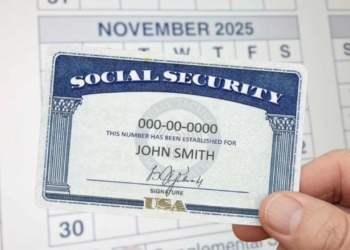The $8,046 figure you’ve just seen in this article’s headline isn’t just some rough guess—it’s the absolute maximum refund the Internal Revenue Service (IRS) is greenlit to hand out to qualifying taxpayers for the 2025 tax year.
People often breeze right past this when they’re dealing with low- to moderate-income returns, but it’s the crown jewel of the Earned Income Tax Credit (EITC), a tax tool that can really pump some extra cash into family budgets at a time when every dollar counts. What’s wild about it being refundable is that you don’t even need to have had taxes withheld from your paycheck upfront; the government can still cut you a check.
Unlocking the $8,046 EITC Refund: Your How-to Guide
At its core, the credit hinges on your earned income—think wages, tips, or self-employment earnings—which is basically the IRS’s way of saying it’s there to top up what you make from legit work. For 2025, the benefits break down pretty sharply by family setup, with the biggest payouts going to households with three or more qualifying kids, as defined by the IRS rules.
That said, you don’t just stumble into this tax credit: it’s gated behind a bunch of criteria around your immigration status, age, where you live, and investment income caps. What follows is a breakdown of eligibility rules, income limits, and how to claim it, all pulled straight from official IRS docs and announcements.
Income Thresholds and Credit Amounts
Eligibility and your final credit amount get filtered through a set of income limits that act like a gatekeeper. If you don’t have any qualifying kids, your earned income and adjusted gross income (AGI) can’t top $19,104 if you’re single or head of household, or $26,214 if you’re married filing jointly. The max credit here is $649, and it starts tapering off as you creep closer to those ceilings.
Things shift big time once kids enter the picture. Claiming one qualifying child bumps your limits to $50,434 for singles and $57,554 for joint filers, opening up a possible $4,328 credit.
With two or more, it’s $57,310 and $64,430 respectively, unlocking up to $7,152. And for families with three or more qualifying kids, you can earn up to $61,555 single or $68,675 married, snagging that headline $8,046 refund.
What Counts as a Qualifying Child (and the Fine Print)
The credit ramps up with every earned dollar until it hits a plateau, then it gently phases out until it vanishes once you cross the threshold. This setup creates a sweet spot for maxing it out—usually somewhere between $10,000 and $20,000 in annual income, depending on your family.
“Qualifying child” isn’t the same as just any kid living under your roof—it’s the IRS’s picky technical term that demands you nail four tests: relationship, age, residency, and support. On relationship, we’re talking biological kids, stepkids, adopted ones, foster children, siblings, half-siblings, or any descendants of those. Age-wise, the child has to be under 19 (or under 24 if they’re a full-time student), with no age cap if they’re permanently and totally disabled.
Residency means they’ve shared your home for more than half the tax year, but the rules cut some slack for short trips away, births or deaths during the year. On top of that, the kid can’t have covered more than half their own support costs that year. Slip on any one of these, and poof—they’re not qualifying, which dings your credit amount hard.
How to Claim It and What to Watch For
To actually get the EITC flowing, you’ve got to file a federal tax return—even if your income’s low enough that you weren’t required to. Use Form 1040 or 1040-SR, and if you’re claiming kids, tack on Schedule EIC. Skipping that schedule is a classic pitfall that leads to processing snags or outright denials.
The IRS has a handy EITC Assistant on their website to double-check your eligibility upfront—definitely worth a spin. For filing, grab IRS-certified software or hit up free VITA/TCE volunteer programs if you qualify (they’re aimed at certain income levels and groups). If you e-file, expect your EITC-inclusive refund in about 21 days, unless it gets flagged for extra review.
One more thing: don’t fall behind on state add-ons. Places like California, New York, and Maryland have their own EITCs, pegged as a percentage of the federal one and paid out separately on your state return. It can stack nicely and boost your total haul.





